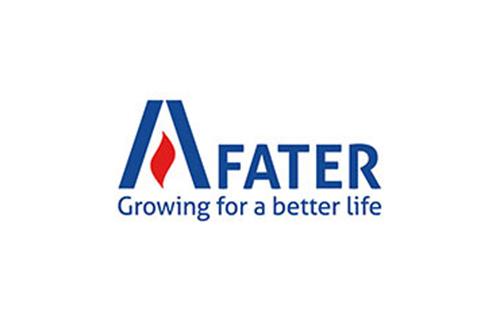
Fater SpA started testing its machine to recycle used personal hygiene absorbent products in collaboration with Contarina SpA, at its head office in Lovadina di Spresiano (TV), which manages waste for the Consorzi Priula and TV3.
Lovadina di Spresiano (TV) 03.24.2015 - Fater SpA started testing its machine to recycle used personal hygiene absorbent products, in collaboration with Contarina SpA, at its head office in Lovadina di Spresiano (TV), which manages waste for the Consorzi Priula and TV3.
The industrial-sized machine can serve a population of 800,000 people and transforms into secondary raw materials up to 8,000 tons per year of personal hygiene absorbent products collected separately.
The objective of the test in industrial volumes is to reach an optimal level of efficiency that can confirm, on a large scale, the expected data and tests carried out so far. The test includes the possibility to operate up to 1,500 tons per year, according to the authorization issued by the Veneto Region. Once the expected levels of efficiency are achieved, authorization to ordinary industrial activity levels will be requested.
The expansion of capacity is significant in view of two factors: 1) the existence of specific separate collection in Italy, which already covers 7,000,000 citizens; 2) statement of interest by Consortia or Institutions belonging to 7 Italian regions with which analyses and technical meetings are underway. In Italy, personal hygiene absorbent products generate approximately 900,000 tons per year of non-separate waste, equal to about 3% of municipal solid wastes sent to landfill (70%) or developed by Fater, generates a "carbon negative" outcome. Ambiente Italia, the Institute of Environmental Research, in fact, analyzed the post-use stage of the product and highlighted how its recycling avoids emissions of CO2 greater than those generated by the collection stage thus marking a negative balance (i.e. of CO2 saved ) of - 17.7 kg of CO2 eq per ton of diapers. In a country with few natural resources the recycling of absorbent products can generate new secondary raw materials: from one ton of waste we recover about 500 kg of secondary raw materials, consisting separately, in 350 kg of cellulose and 150 kg of plastic. The final waste consists of moisture, which is processed and then disposed in compliance with the regulations in force.
The recycling project was designed by Fater in 2009, and it already achieved significant results: in 2011 the first prototype machine was designed and it demonstrated, at increasing volumes, the possibility to recycle personal hygiene absorbent products; in 2013, the industrial machine was manufactured, with a capacity of 8,000 tons per year (capable of serving up to 800,000 citizens), the current machine is ready to operate at Contarina spa; in 2014, the machine was finalized and the effectiveness of the process was checked also testing used product.
The recycling process of used personal hygiene absorbent products. This is how it works:
The principle of the system is that the used products (baby diapers, absorbent products and incontinence diapers of all brands) are collected separately and delivered at the Contarina plant. The technological process has a closed storage system suitable to contain up to 20 tons of products. The waste from the storage system is transferred, through a system of conveyor belts, to the heart of the technological process, which consists of an autoclave. The products, once housed inside the autoclave, through steam under pressure and with no combustion, are opened, sterilized and dried. Once the autoclave cycle is completed, the products enter into the separation stage. They are first crushed, then their recyclable components mechanically separated through a three-stage mechanical system. The water from the process is collected in a special tank to be adequately processed before being disposed. The new secondary raw materials obtained are plastic and cellulose. They are secondary raw materials of high value because (1) personal hygiene absorbent products use plastics and celluloses of high quality and (2) the technological process was designed ad-hoc to have negligible degradation of their quality. The plastics that are obtained by the process are highly performing polyolefins suitable for use in the main processes typical of plastic processing. These are, in fact, in terms of ductility, mechanical strength and colorability closer to virgin polymers than to normal plastics for recycling. The organic-cellulosic part preserves quality characteristics even after the process, so it can be used for applications with high added value such as the production of absorbent products for domestic animals, high quality papers, textile products (viscose and rayon), sugars, and refractory materials.